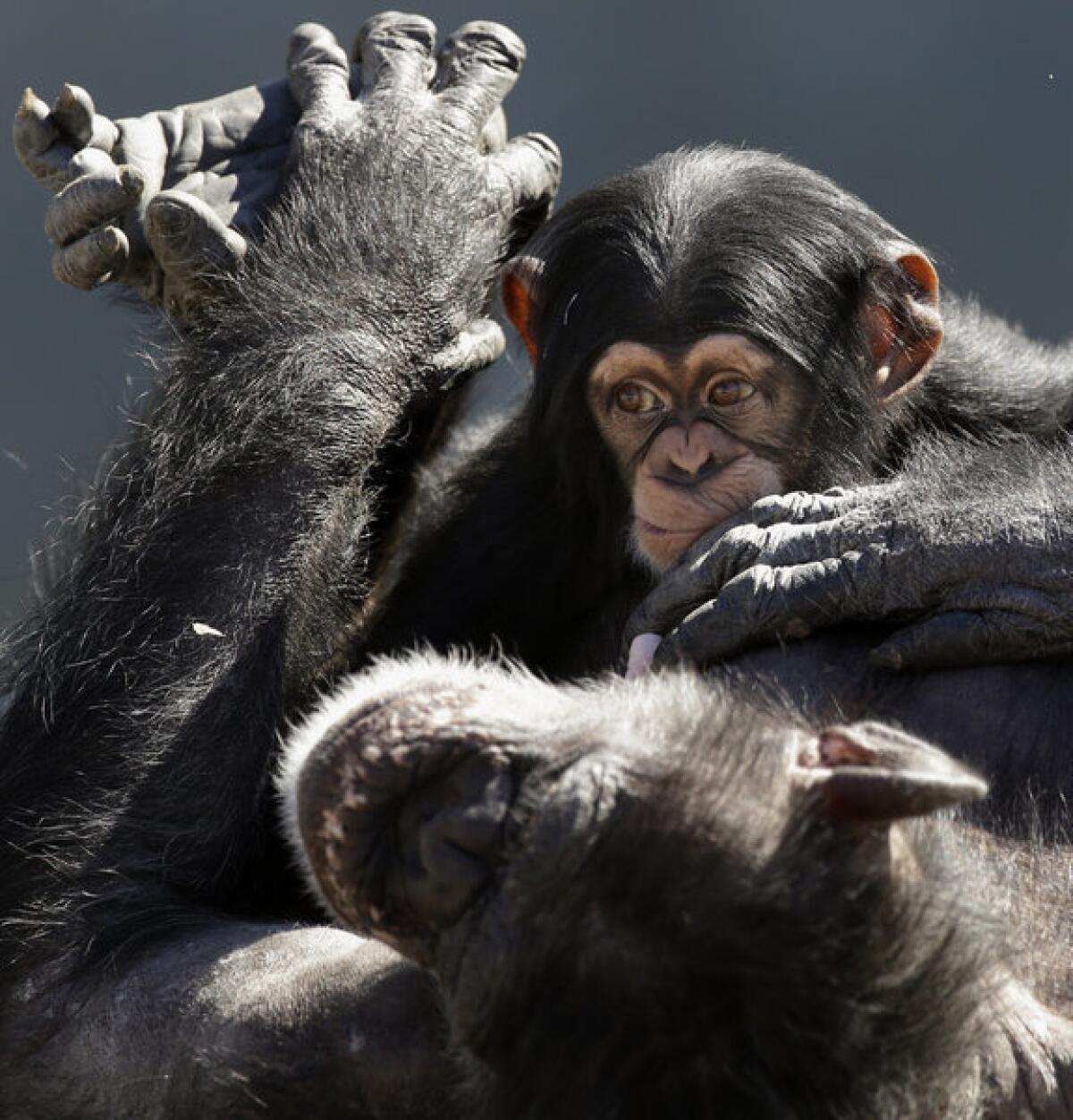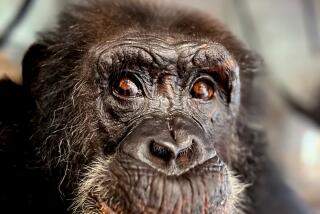Rewriting rules on chimps

In the more than two decades since the U.S. government declared chimpanzees in the wild to be an endangered species, not much has improved for those great apes. The threats of habitat loss, poaching and disease have only intensified. Now, the U.S. Fish and Wildlife Service has proposed reclassifying captive chimpanzees as well, moving them from the “threatened” category to “endangered,” a change that brings with it stricter guidelines covering the handling and use of the animals. In the future, any procedure that harms, harasses or kills a research chimp would require a permit.
This change in status is a smart move, one that has been urged for years by respected wildlife advocates and experts, including the noted chimpanzee researcher Jane Goodall. It never really made sense to have a split classification of the same species. Whether a chimp lives in a zoo in Los Angeles, a research facility in Texas or a rain forest in Gabon, its species is endangered.
There are an estimated 2,000 captive chimpanzees in the U.S. More than 800 of them are in research labs, and many are owned by the federal government. The rest are in sanctuaries, accredited zoos and unaccredited facilities, or in the hands of private trainers, pet owners, sellers and breeders. Under the proposed guidelines, chimps could no longer be sold across state lines. That might limit the pet trade, and that would be good. The trade encourages taking chimps from the wild. And people should not keep these wild, strong creatures as pets anyway.
VIDEO: ‘Chimpanzee’ movie review
The changes would most significantly affect the use of chimpanzees for medical research. Chimps, which have 98% of the same DNA as humans, were crucial to the early research on HIV, as well as to advances in the understanding and treatment of cancer and hepatitis. For that, they have paid a high price — being poked and prodded with needles and electrodes, suffering illnesses with which they were infected. Many have died; others live with post-traumatic stress disorder. In recent years, the number of lab studies involving chimpanzees has dwindled as scientists instead studied genetically altered mice and rats or used new lab techniques.
The prudent new guidelines would not outlaw all chimp research. But they would set a high standard for approval of invasive procedures. To get permits, scientists would have to offer some mitigation that contributes to chimpanzee conservation. Details aren’t yet worked out, but if the research itself is not designed to help the chimpanzee population, the facility might do extra research that does benefit chimps or make financial contributions to conservation.
The proposed guidelines should be applauded and adopted.
More to Read
A cure for the common opinion
Get thought-provoking perspectives with our weekly newsletter.
You may occasionally receive promotional content from the Los Angeles Times.










